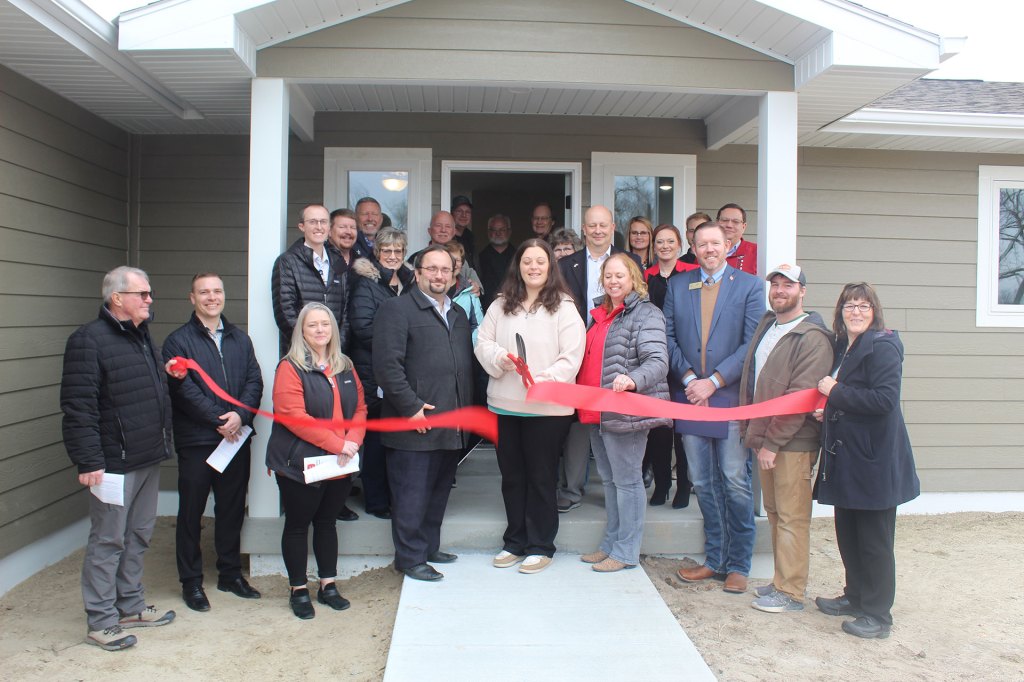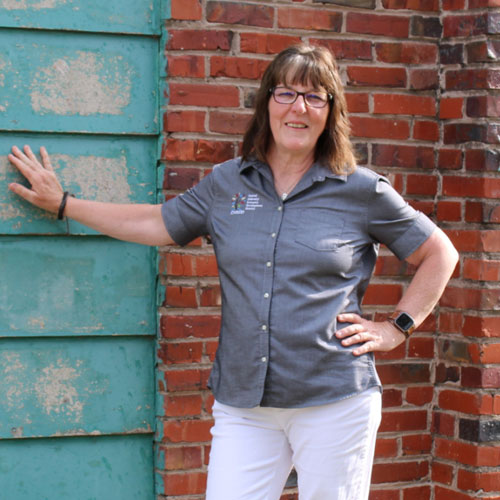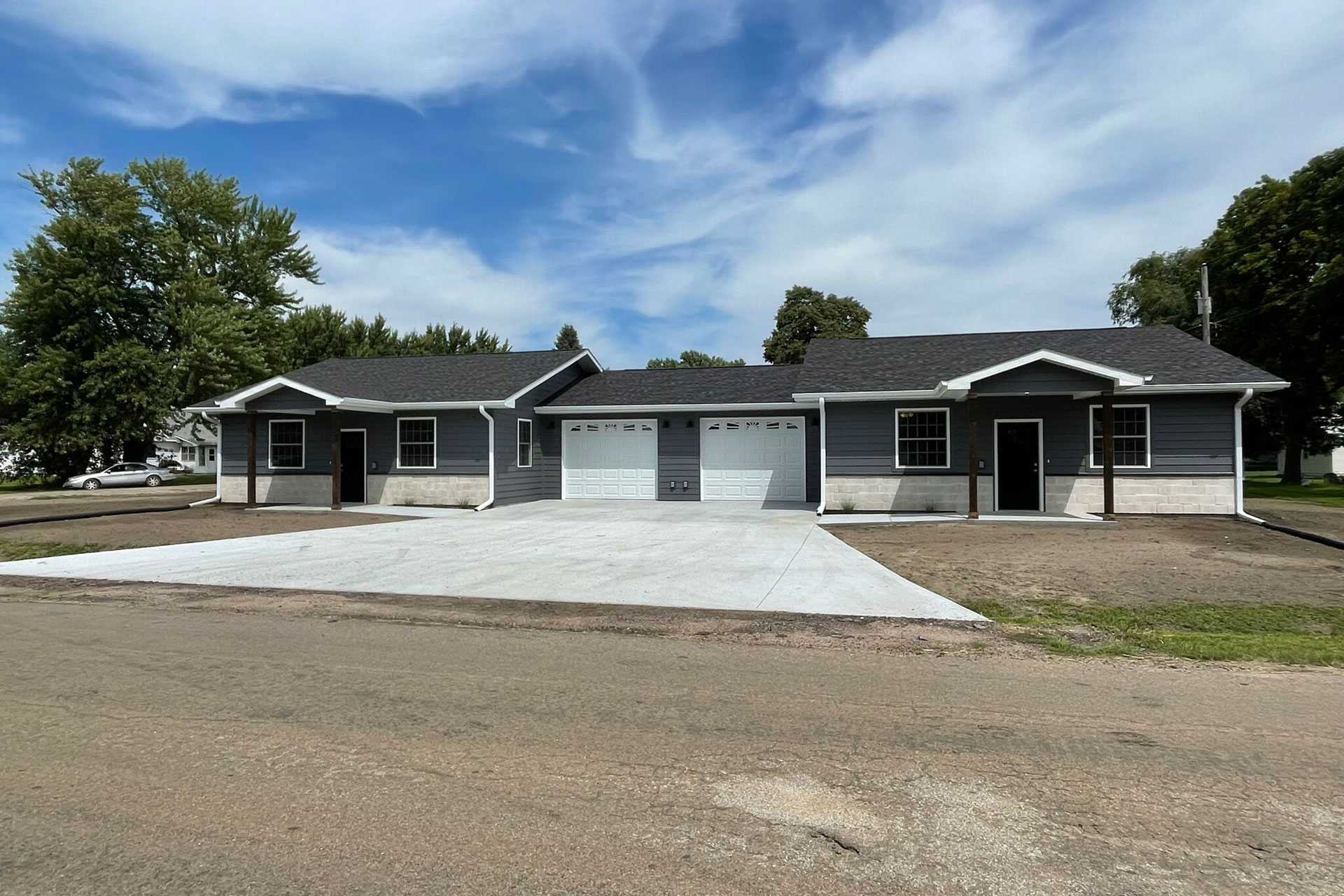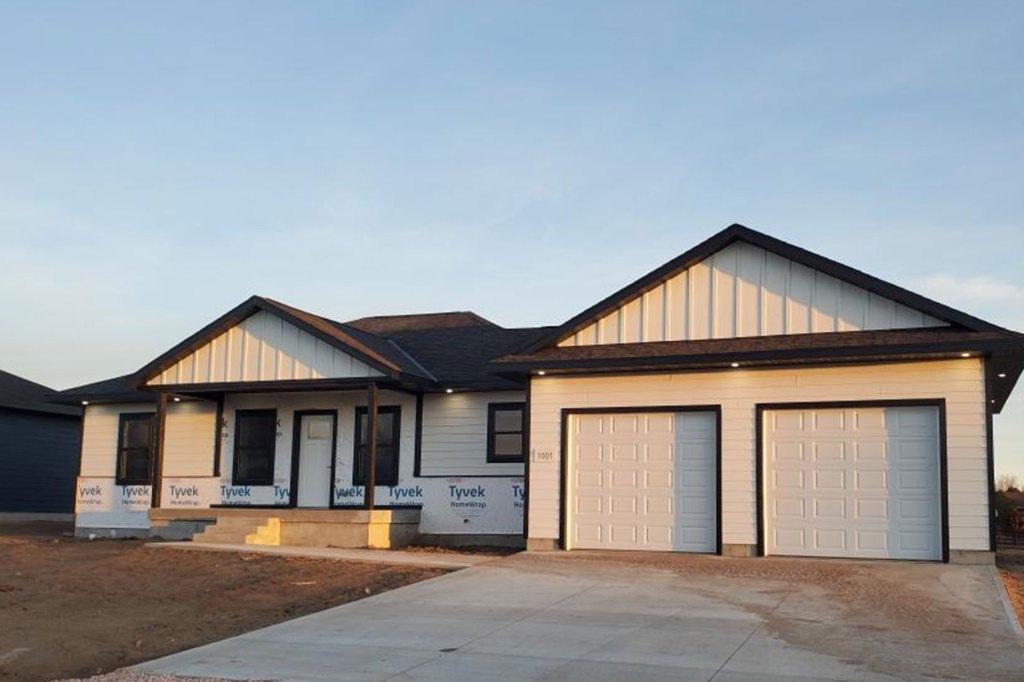Affordable Housing
RURAL AMERICA: A Treasure of ASSETS
February 12, 2024
creative funding and relationships shape affordable housing efforts in central nebraska
By Jennie Blizzard, Fed Communities

Photo by Ellen Mortensen/The Callaway Courier
They’ve built a splash pad on a former baseball field to provide outdoor recreation activities for youth and adults. They’ve also completed an assessment of how the local processing and consumption of locally raised beef and pork can increase workforce opportunities in their region. “We’re involved in a lot of areas of economic development, but affordable housing is where we really cut our teeth,” says Judy Petersen, executive director of the Central Nebraska Economic Development District (CNEDD). “Our board and staff all put our hearts and souls into helping our communities thrive and grow. Without our numerous partners, we simply would not be successful.”
As one of eight economic development districts in Nebraska, CNEDD works in a 14-county region where all of the towns have a population of fewer than 5,000 people. According to the 2020 Census, about 45,000 people live in the region. Developing affordable housing in rural communities can be a challenge for several reasons. Development happens on a smaller scale and creates higher construction costs per unit that can discourage private developers from building there. However, CNEDD has creatively used several financing mechanisms to provide affordable rental and homeownership opportunities, down payment assistance, and home repairs. Judy, who spent eight years at Central Nebraska Housing Developers, talks about how the organization and its partners have forged ahead to improve housing affordability in the region.

One of our favorite housing success stories is about a community that received a grant to build a rental duplex. The school recruited a new band teacher, and he lived in one of the duplex units. The community then received a grant to build new single-family homes for sale. That same band teacher got married, bought one of the new homes, and now has children attending the school.
Judy Petersen
What’s the one thing that you wish people knew about affordable housing in rural areas?
Housing truly is where jobs sleep. The lack of quality, affordable housing is directly tied to our ability to grow as a community. Our communities struggle to retain youth or recruit a workforce for their local businesses. Housing is their number one challenge to community growth.
What’s the biggest affordable housing challenge for rural and why?
In the rural Nebraska region, the cost to build a house is more than what the home will be appraised at after it’s built. There are fewer comparable housing costs that support a higher-value home when individuals seek mortgage financing. Often, those with higher incomes have more financial resources to build homes that may require little or no bank financing. Because of the depressed housing values, there are few professional housing development businesses to help develop and build housing in our communities. There is also little new affordable housing construction.
Additionally, a large number of homes that are 60 years or older need to be repaired or demolished. Owners of those dilapidated homes are often absentee owners who live out of state, pay little to no property taxes, and occupy lots that would be ideal for new construction. Repairing or demolishing the homes would increase the number of quality homes that pay higher property taxes, which would support the community.
related rEAD
What’s one piece of advice that you would give to a rural community who wants to address affordable housing?
Conduct a grassroots housing study that identifies the housing needs of your residents, employers, and employees. Also, conduct an inventory of your current housing stock and its condition. Identify locations of vacant lots or dilapidated structures that could be demolished for future development and prioritize the community’s greatest housing needs. CNEDD conducted housing studies for five of our communities. Because of CNEDD’s involvement in their housing study efforts, four of those communities have moved forward with constructing new housing for their residents.
Share an example of a housing challenge that your organization has addressed creatively and successfully. What made it successful? Which initiative are you most proud of?
Midway through our history of constructing new housing, grant funders required building plans and specs for new housing construction. They had to be approved by the Nebraska Department of Energy. Our positive relationship with them has allowed us to continue to develop these local projects and meet the state’s building requirements. CNEDD has several Department of Energy-approved housing plans, which enables us to economically construct these homes in multiple communities.
Because there are almost no housing developers in our region, we use grants to develop housing projects. However, people with grant-writing experience normally do not also have housing development experience. So, our staff began attending housing development financing training. They also partnered with a local lumberyard, local builder, and a housing finance authority to help us develop affordable housing.
We are proud that we’ve been able to build affordable new single-family homes or rental housing using grants from the Nebraska Affordable Housing Trust Fund and Rural Workforce Housing. This has been done by using low-income housing tax credits. We’ve built 22 single-family homes that were for sale; 11 single-family homes for rent-to-own; two single-family rental homes; and seven rental duplexes. That’s 49 new housing units in 11 communities. These numbers are huge for us in towns where there has been little to no housing construction for many years.

Photo: Nebraska Department of Economic Development.
Tell us about how CNEDD created the Central Nebraska Housing and Economic Developers group.
In 2003, CNEDD formed Central Nebraska Housing and Economic Developers as a separate IRS-designated non-profit organization to apply for housing grant funds for the district. The 40 volunteer board members for this new entity are housing stakeholders throughout our region. These committed leaders use their various backgrounds and community experiences to help us identify the region’s housing needs. They also help us prioritize the programs we deliver to our municipal members. Our dedicated staff also help deliver numerous programs and services to our district members.
Are there any successful partnerships, collaborations and/or funding strategies between private organizations, non-profits, and government agencies that are addressing affordable housing?
Nebraska Department of Economic Development (NDED) is our greatest housing partner. It has granted over $13 million to CNEDD and individual municipalities to construct housing units, repair existing homes, and provide down payment assistance. The Nebraska Investment Finance Authority has also been instrumental by providing Low-Income Housing Tax Credits and by providing $225,000 in housing outreach funds. These funds have supported CNEDD’s growth in housing services. Locally, CNEDD has partnered with community foundations and private development corporations. They have also used local sales tax funding programs.

Photo: Central Nebraska Economic Development District
Created in 1996, The Nebraska Affordable Housing Trust Fund (NAHTF) collects documentary stamp taxes. The NAHTF has a dedicated source of funding through the stamp tax — a tax on most deeds and documents that involves a transfer of real estate interests. The fees from this tax must be invested into programs for affordable housing. It provides a flexible stream of financial resources to address local housing priorities, including both rental and homeownership construction and rehabilitation. This funding has enhanced housing resources. Beyond federal funding it has allowed us to increase the number of beneficiaries we serve whose household income is in the middle-income range.
Also, within six years, the state has invested funds into the Rural Workforce Housing Fund and Middle-Income Housing Fund programs. These programs expand development of new housing units for households without income restrictions. The only restriction is the sales price of the house, to ensure that the homes are available to households in middle-to higher-income ranges. Both programs have provided Nebraska with significant investments into the expansion of affordable housing, which will retain and attract Nebraska’s workforce.
What additional projects have your organization been involved with that are directly or indirectly linked to affordable housing?
In addition to new housing construction, the district and our nonprofit have committed to delivering housing loan funds to households for rehabilitation. We also provide down payment assistance. Since 2006, we have repaired over 225 homes and provided down payment assistance to over 45 households. We offer more than just first-time homeowners down-payment assistance. We do not want that to be the barrier to attracting families to live and work in our region.
Related Federal Reserve resources: affordable housing
- Investing in Rural Prosperity – “Re-Imagining Manufactured Housing in Rural Communities”
- Rural Spotlight: “Creating a Reservoir of Housing Resources in New River Valley”
- Rural Spotlight: “Giving the Old High School a Second Life as Affordable Housing in Carroll County”
- Investing in Housing: “Developing Strategies to House the Rural Workforce”
- Manufactured Housing Communities in Pennsylvania: The Basics
- Rental Affordability and COVID-19 in Rural New England








